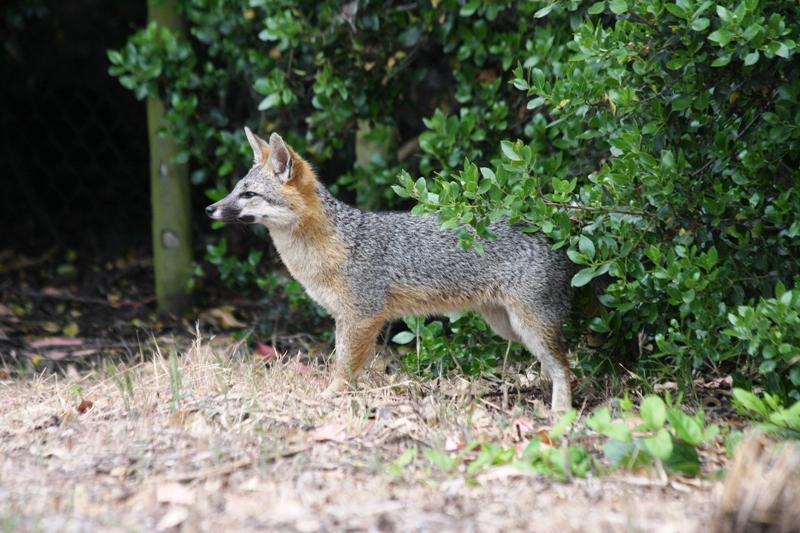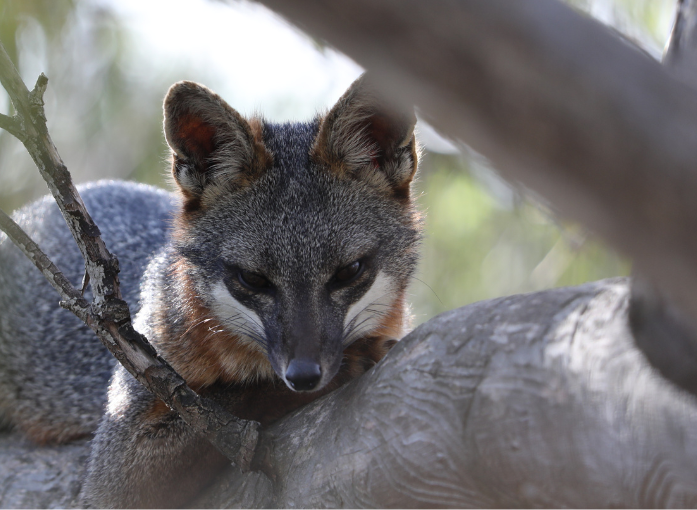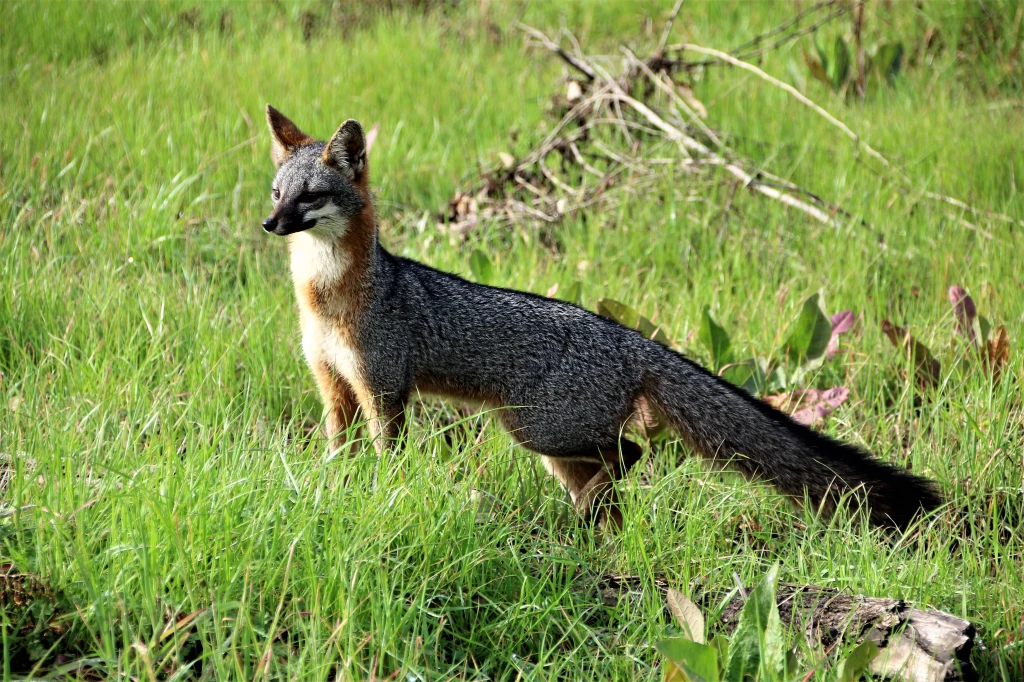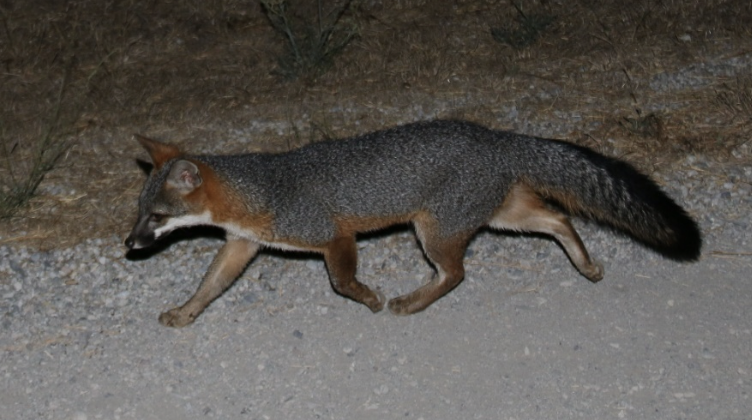What’s Going on In the Mind of A Gray Fox? Part1
by William C. Leikam
President, CEO & Co-founder, Urban Wildlife Research Project
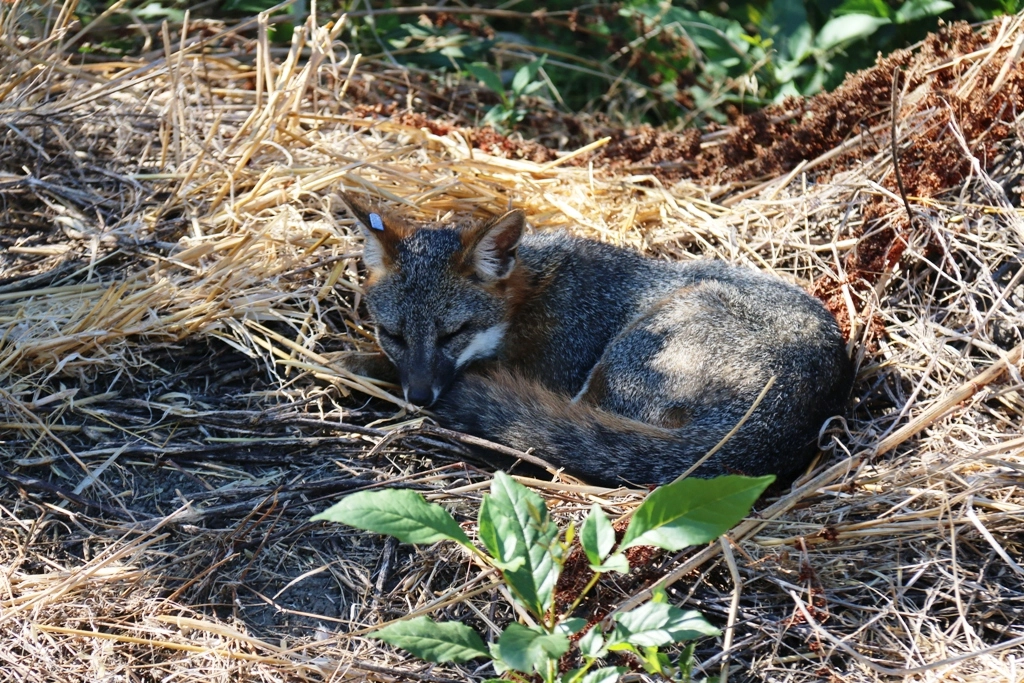
As has been mentioned on numerous occasions, and according to my view, the pair of gray foxes at the baylands have lately done nothing worthy of note. Because of that, I’d like to dig into a purely speculative area of these fascinating keystone predators: What’s going on in the mind of a gray fox?

Background:
In July of 2016, I came upon a sleeping gray fox pup. It was the first pup I’d ever found that was clearly asleep. Oh, I had seen pups awake from sleep, but nothing like that afternoon. This was one of those oddly behaving, abnormal pups born to Mama Cute and Dark. I stood there looking down upon this young fox when suddenly its hind leg shot out, twitched, relaxed and then lightly shuddered. He lay still. I thought, “That pup must be dreaming.” I had, over the years, read and heard that such activity in dogs was a sign that that they were dreaming. I wondered, “What’s going on inside that pup’s mind? What’s he dreaming about? Does his dream look like mine, I mean with visuals and all?”
I was stumped. I thought, “There’s no way that I can get inside that little predator’s head?” For some months, I mulled that over, back and forth, trying to find a way to understand as best I could and find some small way to access the interior of that gray fox’s thought processes.
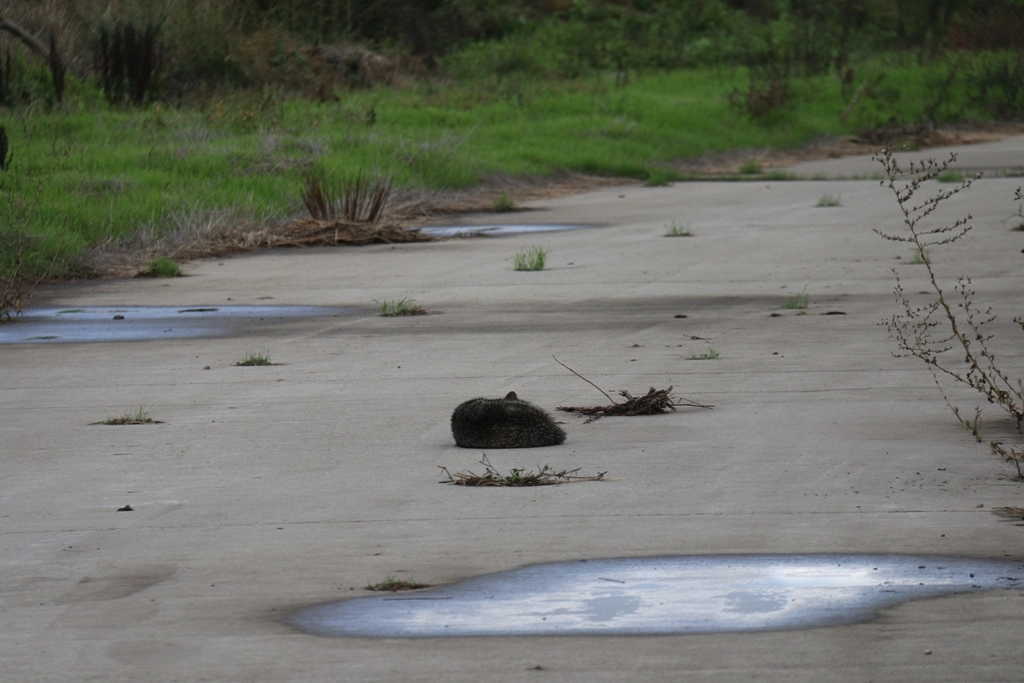
One evening while working on my book, the Road from Fox Hollow, about these foxes, I found myself thinking about what I called our tools of perception; those physical abilities that I use to manage my way through this life. My principal tool is my eyes. I visualize my way through life. Given a wild guess, probably 95% of our speech is laden with visual metaphors like, “Oh yes, I see.” As I wrote, it occurred to me that those foxes also have their tools of perception and almost simultaneously I knew that although they have the same sense organs as we human beings, the question for me became, “Do they use those tools in the same way that I do?”
I began digging in. I needed to know what percentage of our senses are in use at any given time. According to research at Oklahoma State University, the human senses break down as follows: Sight = 83%, Hearing = 11%, Touch = 3.5%, Smell = 1.5%, Taste = 1%
Mind takes all five and makes sense out of our environment. (Source – No longer a valid link: http://www.oces.okstate.edu/washita/uploadedfiles/4hLearning Styles.doc )
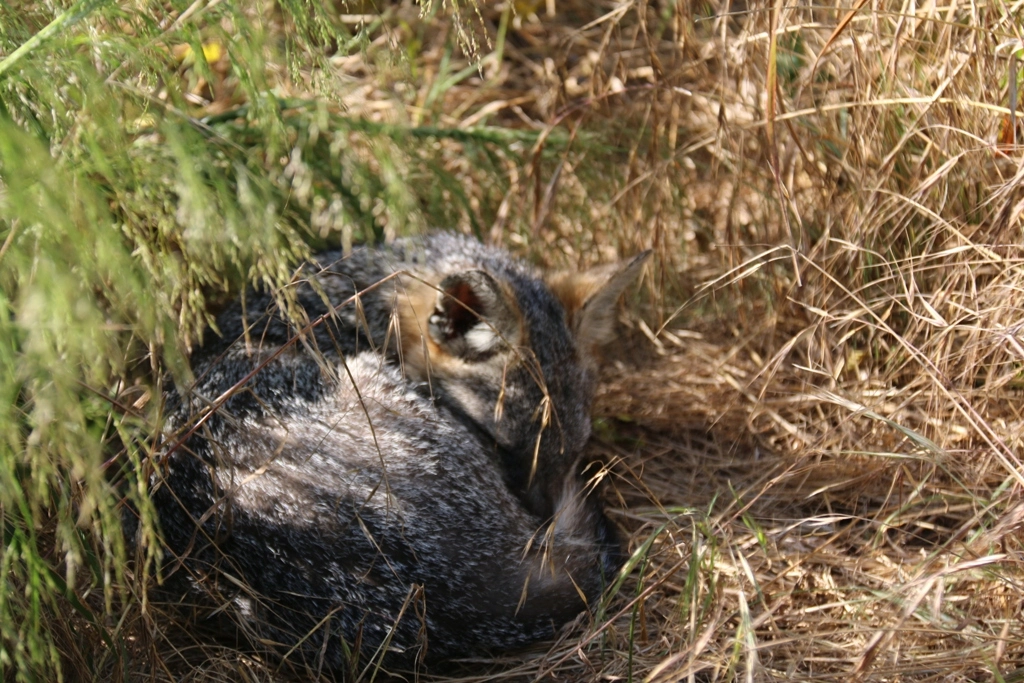
Because there is no gray fox research to establish a baseline for each sense, I needed to base these numbers on field observations, on watching how they use their senses. I estimate that a gray fox’s senses break down as follows: Hearing = 45%, Smell = 40%, Sight = 9%, Touch = 4%, Taste = 2%. Mind takes all five of these senses and makes sense out of their environment. And to support my contention, according to Stefan Pociask who worked at Arizona Game & Fish Department, “[It’s] their keen hearing. That’s their superpower. They are indeed clever. But in my experience, they use their finely tuned sense of smell more in a defensive way. They know when a dog is about. They know when something doesn’t seem right. Their senses are finely tuned, but it is their sense of hearing that takes top honors here. They can pin-point the barest rustling, the tiniest squeak or scrape beneath a foot of snow, and crash through that blanket of snow to locate their prey, within an inch or less of accuracy.” (See Quora.com at https://www.quora.com/From-what-distance-can-foxes-smell-their-prey?share=1)
With that as our starting point, I will conclude this journey into the curious mind of a gray fox in the October issue of the Gray Fox Report. Until then.
Gray Foxes General Health
These two foxes appear to be in good health.
Total Numbers of Gray Foxes in the Palo Alto Baylands Nature Preserve
As of September, 2021, we have two adult gray foxes living in the Palo Alto Baylands Nature Preserve.
Section II
Update for the Urban Wildlife Research Project
Coming: October 22nd we will participate in an online festival out of Los Angeles. We don’t yet have links and registration information, but stay “tuned.” We will send out notice via Constant Contact once we know more.
Check out our Facebook page.
BE SURE TO check out our YouTube Channel for some incredible wildlife videos at https://www.youtube.com/channel/UC5ujc7p8dU1-O5AbPAWz2_Q
Check out Bill’s interview of January 1, 2021, hosted by the Town of Woodside California for their First Friday event at https://youtu.be/QrZzvmrqKTA
Undoubtedly the best Radio interview – KALW (Local PBS) Audio Recording Interviewed by Sofie Kodner during December 2020 – Broadcast 1/11/2021 5:00 PM on PBS’s program Crosscurrents https://www.kalw.org/post/bay-area-wildlife-habitats-are-disappearing-fox-guy-has-plan
Bill had a conversation with John Muir Laws and Marcia Sivek during a drawing workshop featuring the gray fox with the renowned artist John Muir Laws on January 14, 2021. It aired from noon until 1:30 PM. The Gray Fox: Art and Conservation • John Muir Laws
You can access Bill’s PowerPoint presentation Corridors & Connections: Sustaining the Health of All Wildlife presented during the October 24th P-22 Urban Wildlife Festival here: https://www.youtube.com/watch?v=Dh4MQL1D1Cc
NEW – To find out more about us, search Urban Wildlife Research Project, UWRP, gray foxes, wildlife connection, linkages, corridors and several documentaries including the video clips
If you haven’t had a chance to read some of the articles that have been written about our study of gray fox behavior and our corridor work, click on these links as they will take you to the source: Bill Leikam – The Fox Guy, and Greg Kerekes & URWP
Section III
Gray Fox, Baylands Goals
Within the permit that allows the Urban Wildlife Research Project to conduct its study of the behavior of the gray fox at the Palo Alto Baylands Nature Preserve, the objectives covered area:
- Monitoring of urban gray fox Denning sites in Palo Alto Baylands.
This is being accomplished during the period when the gray foxes use a den site. It is one of the prime locations for gathering most of the behavioral data of the litter and for adults alike.
- Assessment of status and population trends of Baylands urban gray foxes
Since January 2019 a pair of resident gray foxes have claimed territory at the Palo Alto Baylands Nature Preserve.
- Identification of habitat features that promote the presence of urban gray foxes
After considering this and talking with people who know how to restore habitats, we need to assess what kinds of plants, including the Alkaline Salt Bush, would grow best along the edge of the saltwater channel and alongside the marsh. We need to grow a permanent habitat that contains the corridors and plant it as soon as possible. We’ll keep an eye on this as this is a critical link between the southern region of the Baylands and the northern region.
- Assessment of reproductive success and identification of factors that promote successful reproduction
Open up the pinch-point along Matadero Creek by developing thickets that link one area to another, instead of the present “islands”.
- Identification and assessment of possible dispersal travel routes.
Presently there can only be guesses as to dispersal travel routes. We intend to make this important question much more concrete when we attain our collaring/take/capture permit from the Department of Fish & Wildlife.

